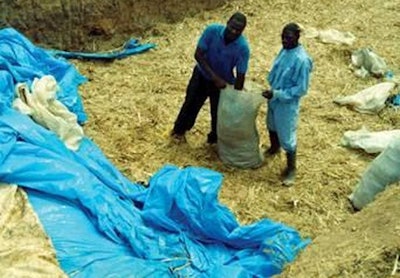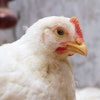
New research suggests producers would benefit from erring on the side of caution when it comes to feed that may be contaminated with viral diseases, including African swine fever (ASF).
While increased feed holding times could prevent the transmission of disease by allowing viruses to degrade, producers need not wait as long as prior research suggested, according to Paul Sundberg, executive director of the Swine Health Information Center.
Because viruses cannot survive outside a host cell, the viability of viruses degrades over time in vectors such as animal feed. Industry leaders have long suspected that holding feed for an extended period of time prior to use would effectively reduce the risk of viral transmission, but the exact time required to eliminate viral contamination is unknown.
The latest results, released earlier this month, suggest holding most feed ingredients at 86 degrees Fahrenheit for 26 days could eliminate 99.99 percent of viral contamination. Viruses degraded faster in lysine, an amino acid, while other tested ingredients — vitamin D, DDGS, and soybean meal — took longer. Viruses also survived longer in cooler temperatures, which surprised no one, but raises questions about balancing viral concerns with preventing the growth of bacteria and other pathogens that proliferate in warmer temperatures.
The extended hold times required at lower temperatures — the test pathogen, Senecavirus A, was capable of surviving in DDGS at 36.9 degrees Fahrenheit for nearly 500 days — also conflict with the need to prevent nutritional decay.
“One thing to keep in mind is that nutritionists typically say first in, first out when it comes to using ingredients at the manufacturing facility,” said Leah Wilkinson, vice president of public policy and education for the American Feed Industry Association. “And there is reason for that. Each additional day can lead to a degeneration in nutrient value. As an industry, we have to balance the need to proactively keep the ASF virus out of the feed supply, while also continuing to provide nutritious feed for animals.”
Although this round of tests did not look specifically at ASF, Sundberg said developing holding times specific to ASF is under way in Kansas.
While there are still questions about the practicality of extended feed holding times, Sundberg pointed out that holding feed is not the only means of preventing viral transmission. Feed that is handled in a biosecure way and transported in sealed containers poses little risk. Knowing where an ingredient was processed and how it was handled is critical, Sundberg said.
“Producers should be talking to their feed supplier … and getting a plan together to address feed safety,” Sundberg said. “And take into account his research information.”
View our continuing coverage of the African swine fever outbreak.

















